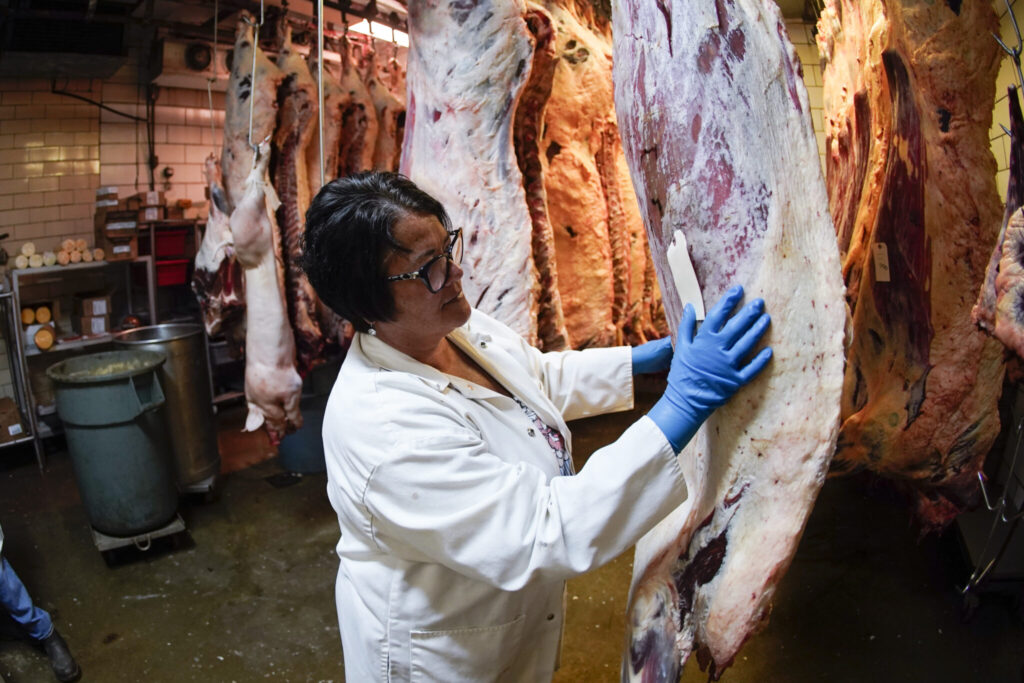Wholesale prices rose less than expected in April, according to a Labor Department report Thursday that provides more hope that inflation is at least trending lower. The producer price index, a measure of prices for final demand goods and services, increased 0.2%, against the Dow Jones estimate for 0.3%. Excluding food and energy, the core PPI also rose 0.2%, in line with expectations. The core reading was the same excluding trade. The Associated Press has the story:
US wholesale price report shows easing in April
Newslooks- WASHINGTON (AP)
Wholesale prices in the United States decelerated last month, the latest sign that inflationary pressures may be easing more than a year after the Federal Reserve unleashed an aggressive campaign of steadily higher interest rates.
From March to April, the government’s producer price index rose 0.2% after falling 0.4% from February to March. Compared with a year earlier, wholesale prices rose just 2.3% last month, the 10th straight slowdown and the lowest figure since January 2021 .
The index that the Labor Department issued Thursday reflects prices charged by manufacturers, farmers and wholesalers. It can provide an early sign of how fast consumer inflation will rise.

Excluding volatile food and energy prices, so-called core wholesale inflation rose 0.2% from March and 3.2% from 12 months earlier. The Fed pays particularly close attention to core prices, which tend to be a better gauge of the economy’s underlying inflation pressures.
Thursday’s figures follow a government report Wednesday that showed that at the consumer level, core prices rose 0.4% from March to April — the fifth straight month that those prices have risen at least that much, well above the pace needed to meet the Fed’s 2% annual inflation target.
On a year-over-year basis, overall consumer inflation, at 4.9%, has dropped significantly since peaking at 9.1% in June 2022 yet remains well above the Fed’s target level. Economic growth slowed to a tepid 1.1% annual rate from January through March.

The Fed has raised its benchmark interest rate 10 times in 14 months. The central bank’s policymakers want to slow the U.S. economy — the world’s biggest — just enough to control price increases without causing a recession. But many economists are skeptical and expect the United States to slip into a recession later this year.
Higher borrowing costs have dealt a blow to some key sectors of the economy, notably the housing market. Pounded by higher mortgage rates, sales of existing homes were down a sharp 22% in March from a year earlier. Investment in housing has cratered over the past year.
Still, the job market, the cornerstone of the economy, remains healthy even though it has lost some momentum. The unemployment rate, at 3.4, is at a 54-year low.
Last week, the Fed signaled that it may now pause its interest rate hikes so that its policymakers can step back and assess the impact of higher rates on growth and inflation. Chair Jerome Powell also said the Fed would monitor other threats, including the recent turmoil in the banking sector, to determine whether to suspend its rate hikes.
Powell stressed his belief that the collapse of three large banks in the past six weeks will likely cause other banks to tighten lending to avoid similar fates. Such lending cutbacks, he added, will likely help slow the economy, cool inflation and lessen the need for the Fed to further raise rates.







